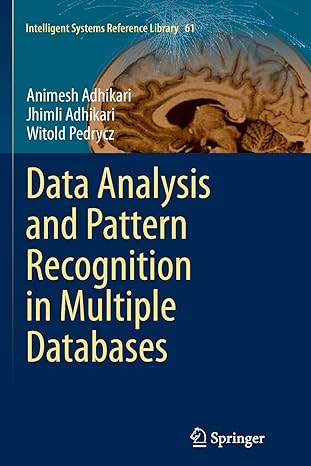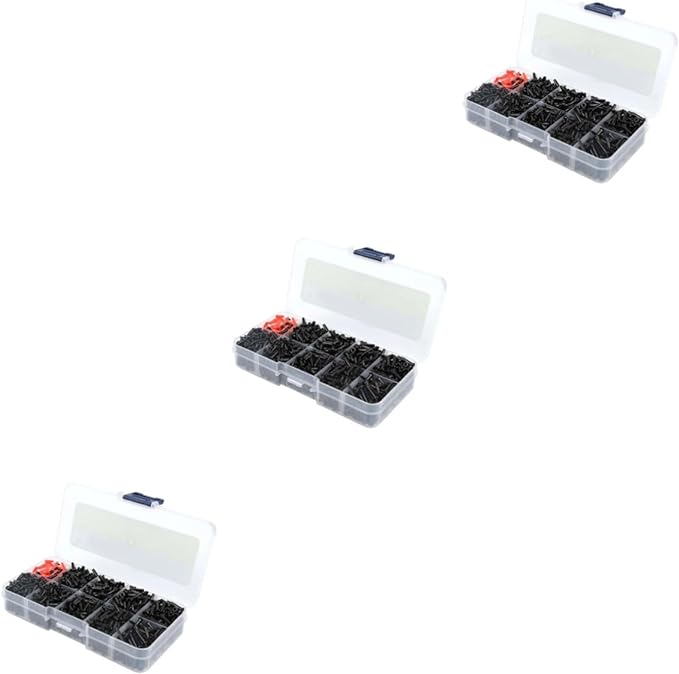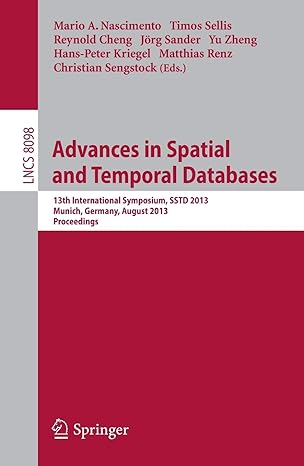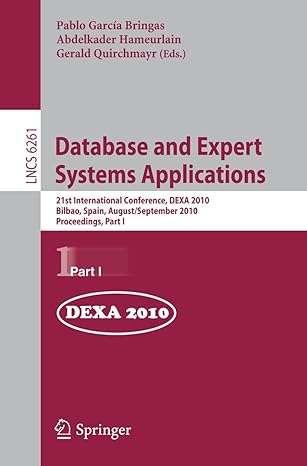Go back


Data Analysis And Pattern Recognition In Multiple Databases(1st Edition)
Authors:
Animesh Adhikari ,Jhimli Adhikari ,Witold Pedrycz

Cover Type:Hardcover
Condition:Used
In Stock
Shipment time
Expected shipping within 2 DaysPopular items with books
Access to 30 Million+ solutions
Free ✝
Ask 50 Questions from expert
AI-Powered Answers
✝ 7 days-trial
Total Price:
$0
List Price: $100.93
Savings: $100.93(100%)
Solution Manual Includes
Access to 30 Million+ solutions
Ask 50 Questions from expert
AI-Powered Answers
24/7 Tutor Help
Detailed solutions for Data Analysis And Pattern Recognition In Multiple Databases
Price:
$9.99
/month
Book details
ISBN: 3319377272, 978-3319377278
Book publisher: Springer
Get your hands on the best-selling book Data Analysis And Pattern Recognition In Multiple Databases 1st Edition for free. Feed your curiosity and let your imagination soar with the best stories coming out to you without hefty price tags. Browse SolutionInn to discover a treasure trove of fiction and non-fiction books where every page leads the reader to an undiscovered world. Start your literary adventure right away and also enjoy free shipping of these complimentary books to your door.
Book Summary: Pattern recognition in data is a well known classical problem that falls under the ambit of data analysis. As we need to handle different data, the nature of patterns, their recognition and the types of data analyses are bound to change. Since the number of data collection channels increases in the recent time and becomes more diversified, many real-world data mining tasks can easily acquire multiple databases from various sources. In these cases, data mining becomes more challenging for several essential reasons. We may encounter sensitive data originating from different sources - those cannot be amalgamated. Even if we are allowed to place different data together, we are certainly not able to analyze them when local identities of patterns are required to be retained. Thus, pattern recognition in multiple databases gives rise to a suite of new, challenging problems different from those encountered before. Association rule mining, global pattern discovery and mining patterns of select items provide different patterns discovery techniques in multiple data sources. Some interesting item-based data analyses are also covered in this book. Interesting patterns, such as exceptional patterns, icebergs and periodic patterns have been recently reported. The book presents a thorough influence analysis between items in time-stamped databases. The recent research on mining multiple related databases is covered while some previous contributions to the area are highlighted and contrasted with the most recent developments.
Customers also bought these books
Frequently Bought Together
Top Reviews for Books
SHAS ak
( 4 )
"Delivery was considerably fast, and the book I received was in a good condition."










